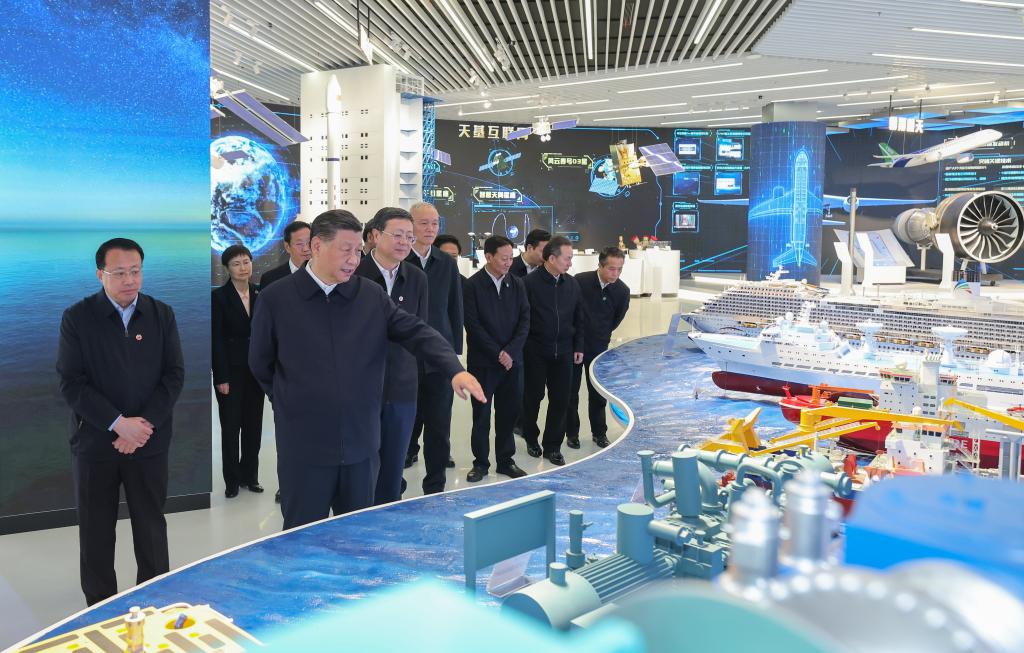Yangtze River Delta Leads Innovative Development

By Staff Reporters
The Yangtze River Delta, encompassing Shanghai and the provinces of Jiangsu, Zhejiang and Anhui, covering around 358,000 square kilometers, generates nearly a quarter of China's GDP and contributes to over one-third of the country's total foreign trade.
On a crucial inspection tour, Chinese President Xi Jinping stressed efforts to make new major breakthroughs in the integrated development of the Yangtze River Delta and enhance the region's leading and exemplary role in pursuing Chinese modernization.
Xi particularly stressed the need for Shanghai to accelerate the construction of the "five centers" - the international center of economy, finance, trade, shipping, and science and technology innovation.
Rich sci-tech innovation resources
Shanghai has consistently showcased unique advantages in sci-tech innovation, boasting the largest talent pool in China over the past three years, as revealed in the Shanghai Talent Supply and Demand Data Report. Despite challenges posed by the COVID-19 pandemic, Shanghai maintained its leading position, with a talent proportion of 10.2 percent in 2022 — surpassing other Chinese big cities of Beijing (9.18 percent) and Shenzhen (6.43 percent).
Beijing and Shanghai rank as the top two with the highest number of high-level scientists among 20 major cities known for their sci-tech innovation worldwide, according to a report released at the 15th Pujiang Innovation Forum in 2022.
In addition, Shanghai consistently rates as one of the top cities when it comes to attracting foreign experts. Throughout the decade, more top scientists moved to Shanghai from key cities in developed countries than left it, according to Yicai Global.
Striving to build a global sci-tech innovation center
Shanghai, the largest city in China known for its vibrancy, openness and innovation, has taken center stage since China implemented the policy of reform and opening up. Shanghai's exemplary role as a major economic powerhouse leading China towards high-quality development is underscored again in the new era.
Based on the resources, Shanghai is dedicated to becoming a sci-tech innovation hub, contributing to breakthroughs in science and technology development in the Yangtze River Delta.
According to the World Intellectual Property Organization's latest Global Innovation Index released in September, the Shanghai-Suzhou sci-tech cluster moved up one place to enter the top 5 on the list of top 100 sci-tech clusters, and two other Chinese sci-tech clusters - Shenzhen-Hong Kong-Guangzhou and Beijing - also made the top five..
Chinese cities are rapidly growing in high-quality scientific research while American and European cities are dropping, according to a global ranking of top science cities by scientific database Nature Index released this November. Shanghai is ranked in third place for high-quality research output according to the annual Nature Index report.
Leading the way in integrated development
The integrated development of the Yangtze River Delta is undergoing new major breakthroughs, which enhanced the region's leading and exemplary role in pursuing Chinese modernization.
The Yangtze River Delta is home to many industrial and supply chains for critical industries. As a major automobile production base in China, a new energy vehicle (NEV) rolls off the production lines in the Yangtze River Delta every 10 seconds, according to Xinhua.
With the chips and software sourced from Shanghai, batteries from Jiangsu, and die-casting machines from Zhejiang, an NEV factory in the delta region can acquire all auto parts within a 4-hour drive.
This showcases the immense potential for synergy-driven development within the Yangtze River Delta, making it an example of collaborative success for the rest of the country.







